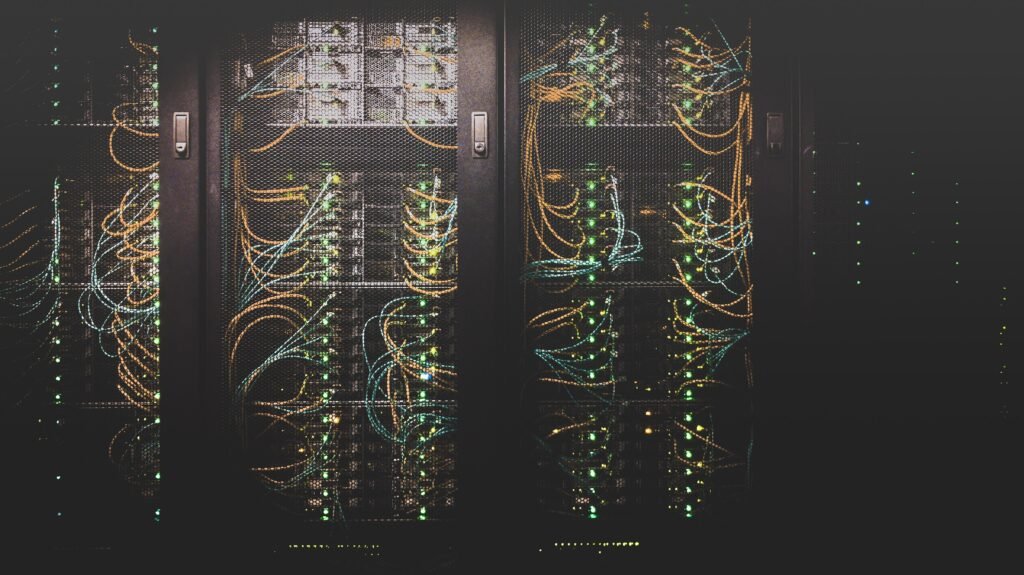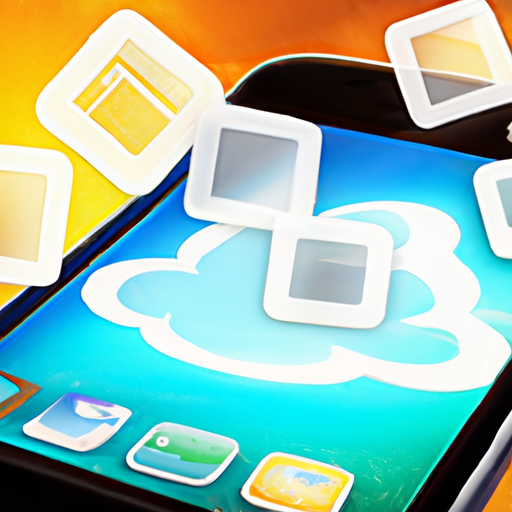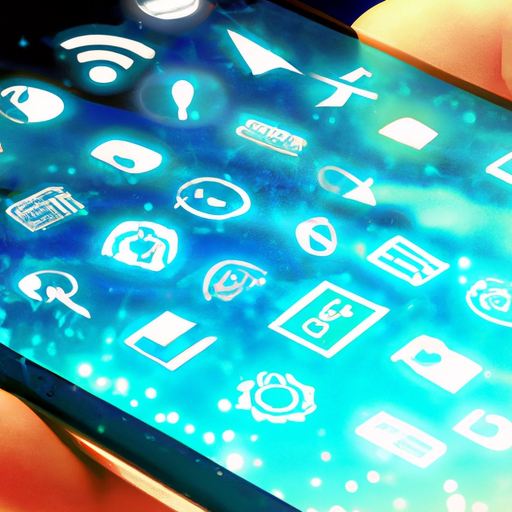If you’ve ever found yourself wondering how to transfer data from one smartphone to another, you’re in luck! Introducing “5 Easy Ways to Transfer Data Between Smartphones.” This groundbreaking product offers simple, hassle-free solutions for seamlessly moving your precious data, whether it’s photos, videos, contacts, or any other files, from one device to another. No more worrying about lost data or spending hours manually transferring files one by one. With “5 Easy Ways to Transfer Data Between Smartphones,” you’ll have everything you need to effortlessly switch to a new device without missing a beat.

Method 1: Using Cloud Storage
1.1. Sign up for a cloud storage account
One of the easiest ways to transfer data between smartphones is by using cloud storage. To begin, you will need to sign up for a cloud storage account. There are several popular cloud storage providers available such as Google Drive, Dropbox, and iCloud. Simply visit their websites or download their respective apps and follow the instructions to create an account. Make sure to choose a cloud storage provider that is compatible with both your old and new smartphones.
1.2. Upload data from old smartphone
Once you have created a cloud storage account, the next step is to upload your data from your old smartphone to the cloud. Depending on the cloud storage provider you are using, there may be different methods to upload data. Generally, you can choose to upload individual files or entire folders. It is recommended to organize your data into different folders before uploading to make it easier to find and access later on.
1.3. Download data on new smartphone
After successfully uploading your data to the cloud, you can now proceed to download it on your new smartphone. Install the cloud storage app on your new smartphone and sign in using the same account you created earlier. Navigate to the files or folders you uploaded and select the data you wish to download. Alternatively, some cloud storage apps may have a sync feature that automatically downloads all your data to your new smartphone. This method allows you to access your files anytime and anywhere as long as you have an internet connection.
Method 2: Using a USB Cable
2.1. Connect both smartphones with a USB cable
If you have a USB cable available, this method provides a direct and fast way to transfer data between smartphones. Start by connecting both your old and new smartphones using the USB cable. Make sure to use a cable that is compatible with both smartphones.
2.2. Enable USB transfer mode
Once the smartphones are connected via USB, you will need to enable USB transfer mode on both devices. This mode allows data to be transferred between the smartphones using the USB connection. To enable USB transfer mode, go to the notification panel or settings menu on your smartphones and look for the option to enable USB file transfer or USB debugging. Follow the on-screen instructions to enable this mode on both smartphones.
2.3. Transfer data from old smartphone to new smartphone
With USB transfer mode enabled, you can now transfer data from your old smartphone to your new smartphone. Simply navigate to the file manager or storage settings on your old smartphone and select the files or folders you wish to transfer. Once selected, choose the option to copy or move the data and navigate to the storage location on your new smartphone where you want to transfer the files or folders. Paste the data into the desired location, and the transfer process will begin. The time it takes to transfer the data depends on the size and quantity of the files being transferred.
Method 3: Using Bluetooth
3.1. Enable Bluetooth on both smartphones
Bluetooth is a wireless technology that allows you to transfer data between smartphones without the need for cables or an internet connection. To use Bluetooth for data transfer, start by enabling Bluetooth on both your old and new smartphones. You can usually find this option in the settings menu or quick settings panel of your smartphones.
3.2. Pair the smartphones
Once Bluetooth is enabled on both smartphones, you will need to pair them together. On one of the smartphones, go to the Bluetooth settings and choose the option to scan for devices. Select the other smartphone from the list of available devices to initiate the pairing process. The other smartphone will then receive a pairing request notification and you will need to accept the request to establish the connection between the two smartphones.
3.3. Transfer data using Bluetooth
After successfully pairing the smartphones, you can now transfer data using Bluetooth. On the smartphone that contains the data you wish to transfer, go to the file manager or storage settings and select the files or folders you want to transfer. Look for the option to share or send the selected data and choose Bluetooth as the sharing method. Select the paired smartphone as the recipient and confirm the transfer. The data will be sent over Bluetooth and received on the other smartphone. Note that Bluetooth transfer speed can be relatively slower compared to other methods, especially for larger files.
Method 4: Using a MicroSD Card
4.1. Insert a MicroSD card into the old smartphone
If both your old and new smartphones have MicroSD card slots, you can easily transfer data by using a MicroSD card as an intermediary storage device. Begin by inserting a MicroSD card into the MicroSD card slot of your old smartphone. Make sure to choose a suitable capacity MicroSD card that can accommodate all the data you wish to transfer.
4.2. Transfer data to the MicroSD card
Once the MicroSD card is inserted into the old smartphone, you can start transferring data to it. Navigate to the file manager or storage settings on your old smartphone and select the files or folders you want to transfer. Choose the option to copy or move the data and select the MicroSD card as the destination. The data will be saved onto the MicroSD card, and you can monitor the transfer progress. Depending on the size and quantity of the files, it may take some time to complete the transfer.
4.3. Insert the MicroSD card into the new smartphone and transfer data
Once the data transfer to the MicroSD card is complete, safely remove the MicroSD card from the old smartphone and insert it into the MicroSD card slot of the new smartphone. After inserting the MicroSD card, go to the file manager or storage settings on your new smartphone and navigate to the MicroSD card. Select the files or folders you want to transfer and choose the option to copy or move the data. Select the storage location on your new smartphone, and the transfer will begin. The data will be copied from the MicroSD card to your new smartphone, and you can access it directly on the device.

Method 5: Using a Data Transfer App
5.1. Install a data transfer app on both smartphones
Data transfer apps provide a convenient way to transfer data between smartphones wirelessly. There are various data transfer apps available on app stores, such as Shareit, Xender, and MobileTrans. Start by installing a data transfer app on both your old and new smartphones. Make sure to choose a reputable app with positive reviews to ensure a smooth and reliable data transfer experience.
5.2. Open the app and follow the instructions
Once the data transfer app is installed on both smartphones, open the app on both devices. The app will provide instructions on how to establish a connection between the smartphones. This usually involves scanning a QR code, entering a verification code, or connecting to the same Wi-Fi network. Follow the on-screen instructions and ensure both smartphones are connected and recognized by the app.
5.3. Transfer data between smartphones using the app
Once the smartphones are successfully connected through the data transfer app, you can begin the data transfer process. Depending on the app you are using, there may be different options available for data transfer. You can choose to transfer specific files or folders, contacts, messages, or even apps and settings. Select the data you want to transfer and initiate the transfer process. The app will handle the transfer, and you can monitor the progress on both smartphones. Once the transfer is complete, you can safely disconnect both smartphones and enjoy your transferred data on the new device.
Additional Tips for Successful Data Transfer
6.1. Ensure both smartphones have sufficient storage space
Before initiating any data transfer method, it is important to ensure that both your old and new smartphones have sufficient storage space to accommodate the transferred data. Check the available storage capacity on both devices and make sure there is enough space to avoid any interruptions during the transfer process.
6.2. Clean up and organize data before transferring
To streamline the data transfer process and ensure that only the necessary data is transferred, it is recommended to clean up and organize your data before initiating the transfer. Delete any unnecessary files or apps that are no longer needed. Create folders and arrange your data in a logical and organized manner to make it easier to locate and access on your new smartphone.
6.3. Disconnect from Wi-Fi or mobile data during transfer
To avoid any potential interruptions or conflicts during the data transfer process, it is advisable to disconnect both smartphones from any Wi-Fi networks or mobile data connections. This will ensure that the data transfer remains stable and uninterrupted. However, make sure to reconnect to the internet once the transfer is complete to ensure the proper functioning of any connected apps or services.

Data Transfer Considerations
7.1. Types of data that can be transferred
When considering data transfer methods, it is important to understand the types of data that can be transferred between smartphones. Most methods allow for the transfer of files, such as photos, videos, documents, and music. Some methods also enable the transfer of contacts, messages, call logs, and app data. However, certain types of data, such as system files or protected content, may not be transferable using all methods.
7.2. Possible limitations or restrictions
While there are several methods available for data transfer between smartphones, it is important to be aware of any limitations or restrictions that may apply. For example, some methods may only be compatible with specific operating systems or smartphone models. Additionally, certain data transfer methods may have limitations on the file size or quantity of data that can be transferred at once. It is always recommended to carefully read the documentation or user guides provided with the smartphones and data transfer methods to understand any restrictions or limitations.
7.3. Security and privacy considerations
Before transferring any data between smartphones, it is crucial to consider the security and privacy implications. Ensure that all data being transferred is encrypted and protected from unauthorized access. Avoid using unsecured Wi-Fi networks or data transfer methods that may compromise the security of your data. It is also advisable to review and understand the privacy policies of the data transfer methods or apps being used to ensure your personal information is handled properly.
Troubleshooting Data Transfer Issues
8.1. Check compatibility between smartphones
If you encounter any difficulties during the data transfer process, it is important to check the compatibility between your old and new smartphones. Ensure that both smartphones are running on the same operating system version and check for any specific requirements or settings that need to be enabled for data transfer. If compatibility issues persist, consult the user guides or contact the manufacturers or service providers for further assistance.
8.2. Restart both smartphones and try again
Sometimes, simply restarting both smartphones can resolve any temporary issues or glitches that may be affecting the data transfer process. Restarting the devices clears the temporary memory and allows for a fresh start. After restarting both smartphones, try initiating the data transfer process again and see if the issue has been resolved.
8.3. Seek further assistance from manufacturers or service providers
If you have exhausted all troubleshooting steps and are still experiencing difficulties with data transfer, it is recommended to seek further assistance from the manufacturers or service providers of your smartphones. They may be able to provide specific guidance or offer alternative solutions to help resolve any data transfer issues you may be facing.

Precautions to Take Before Transferring Data
9.1. Backup important data before transferring
Before initiating any data transfer, it is crucial to create a backup of all your important data. This ensures that in the event of any unexpected issues or data loss during the transfer process, you have a copy of your data stored safely. Backup options include cloud storage, external hard drives, or computer backups. Taking this precaution will give you peace of mind and protect your valuable data.
9.2. Remove personal or sensitive information
As part of the data transfer process, it is important to review and remove any personal or sensitive information from your old smartphone. This can include saved passwords, financial information, or any other data that you would not want to be transferred to your new smartphone. Take the time to securely delete or erase this information to protect your privacy and prevent any potential misuse.
9.3. Disable any security features that may interfere with transfer
Certain security features or settings on your smartphones, such as biometric authentication or device encryption, may interfere with the data transfer process. To ensure a smooth transfer, temporarily disable any security features or settings that may cause conflicts. Once the transfer is complete, you can re-enable these security features to maintain the privacy and security of your new smartphone.
Conclusion
10.1. Review the different methods for transferring data
In conclusion, there are several methods available for transferring data between smartphones. Each method has its own advantages and considerations, so it is important to review and understand them before deciding which method to use.
10.2. Choose the most suitable method for your needs
When choosing a method for transferring data, consider factors such as the amount and types of data you need to transfer, the available resources (such as a USB cable or MicroSD card), and the level of convenience you desire. Carefully evaluate your specific requirements and choose the method that best meets your needs.
10.3. Enjoy your new smartphone with all your data intact
By following one of the recommended methods for transferring data, you can seamlessly transition to your new smartphone with all your important data intact. Whether you choose to use cloud storage, a USB cable, Bluetooth, a MicroSD card, or a data transfer app, the process can be straightforward and hassle-free. Enjoy exploring your new smartphone and make the most of all the memories, files, and information you have transferred to it.

